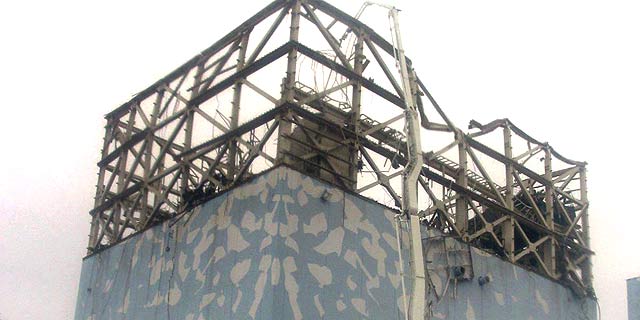The level of radioactive strontium in the land of municipalities of Fukushima province has increased to 26 times since mid-March, but not to pose a risk, according to the Japanese Ministry of Science collected by NHK. A total of 11 soil samples taken from late March until mid-May in 10 towns in this province, where the nuclear plant hit by the earthquake and tsunami of 11 March, containing strontium-90.
The highest concentrations were registered in the towns and Iitate Namie, both within the statutory exclusion zone over 20 km around the plant in Fukushima Daiichi. Levels collected by the ministry in the two municipalities were 250 and 120 becquerel per kilo of soil, respectively, much higher than the 9.4 and 32 becquerel that recorded on 16 March.
Locations in the rest of the readings were between 2 and 18 becquerel per kilo of soil. Strontium is also found in Fukushima City, capital of the province and lies about 60 kilometers from the center, where he arrived carried by the winds blowing to the northwest. The Government has not established a safe level of exposure to strontium, ensures that the detected amounts pose no immediate health risk and which are minimal compared to other substances emitted by the central hilly, such as cesium.
However, some experts warn that the strontium, generated by the fission of uranium atoms, may pose a risk, because it accumulates in bones and can cause bone cancer and leukemia. The Government evaluates samples in a greater number of locations in the following study, meeting the demands of some experts, NHK reported.



The highest concentrations were registered in the towns and Iitate Namie, both within the statutory exclusion zone over 20 km around the plant in Fukushima Daiichi. Levels collected by the ministry in the two municipalities were 250 and 120 becquerel per kilo of soil, respectively, much higher than the 9.4 and 32 becquerel that recorded on 16 March.
Locations in the rest of the readings were between 2 and 18 becquerel per kilo of soil. Strontium is also found in Fukushima City, capital of the province and lies about 60 kilometers from the center, where he arrived carried by the winds blowing to the northwest. The Government has not established a safe level of exposure to strontium, ensures that the detected amounts pose no immediate health risk and which are minimal compared to other substances emitted by the central hilly, such as cesium.
However, some experts warn that the strontium, generated by the fission of uranium atoms, may pose a risk, because it accumulates in bones and can cause bone cancer and leukemia. The Government evaluates samples in a greater number of locations in the following study, meeting the demands of some experts, NHK reported.



- Radioactive strontium detected 62 km from Fukushima No. 1 plant (09/06/2011)
- Mutant Penguin Spotted Off Coast of Fukushima I (09/06/2011)
- Fukushima escalates to worse-case possibility (09/06/2011)
- More Radioactive Dirt Found Almost 40 MIles from Fukushima [Blip] (09/06/2011)
- Watch: In Fukushima, Children Take Their Sandboxes Inside (09/06/2011)
No comments:
Post a Comment